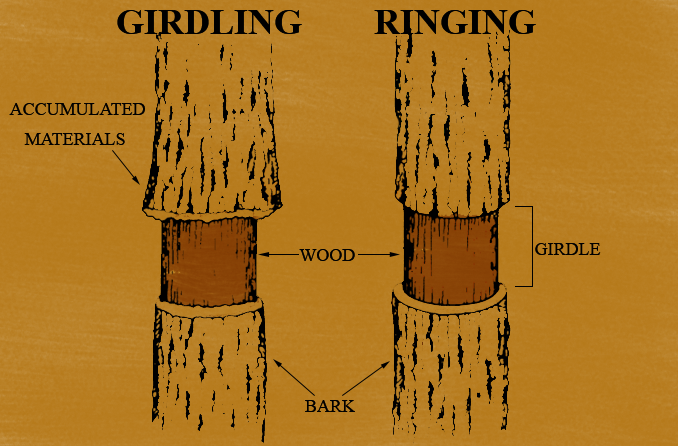
Ringing/Girdling experiment was first performed by?
(a)Malpighi
(b)Strasburger
(c)Godlewski
(d)Bose
Answer
571.8k+ views
Hint: He is an Italian botanist and referred to as the "Founder of microscopic anatomy, histology, and the Father of embryology and physiology".
Complete answer:
The Girdling/Ringing experiment was performed by 'Malpighi' in 1672, 'Stephen Hales' in 1727, and ‘Hartig' in 1837.
-The Girdling/ Ringing experiment involves the removal of all the tissue outside to vascular cambium (bark, cortex, and phloem) in woody stems except for xylem. Xylem is the only remaining tissue in the girdled area which connects the upper and lower part of the plant. This setup is placed in a beaker of water. After some time, it is observed that swelling on the upper part of the ring appears as a result of the accumulation of food material. In subsequent days, the roots die first. The roots cannot synthesize their food by photosynthesis and so they die first as their food supply is lost due to cutting of phloem.
-Eduard Adolf Strasburger (1844- 1912) was a Polish-German professor and one of the most famous botanists of the 19th century. He studied angiosperms in detail.
-Jagadish Chandra Bose (1858-1937) an Indian scientist made huge contributions to many areas of science. He is widely known for inventing the crescograph.
So, the correct answer is ‘Malpighi'.

Note: -The girdling experiment proved that the Phloem is responsible for the conduction of food in plants.
-The passage of absorbed water along with the dissolved minerals through xylem (tracheid and vessel) is known as the Ascent of sap. It takes place at a rate of 10-75 cm/sec.
-After girdling, gradually the whole plant dies as the supply of food stops.
Complete answer:
The Girdling/Ringing experiment was performed by 'Malpighi' in 1672, 'Stephen Hales' in 1727, and ‘Hartig' in 1837.
-The Girdling/ Ringing experiment involves the removal of all the tissue outside to vascular cambium (bark, cortex, and phloem) in woody stems except for xylem. Xylem is the only remaining tissue in the girdled area which connects the upper and lower part of the plant. This setup is placed in a beaker of water. After some time, it is observed that swelling on the upper part of the ring appears as a result of the accumulation of food material. In subsequent days, the roots die first. The roots cannot synthesize their food by photosynthesis and so they die first as their food supply is lost due to cutting of phloem.
-Eduard Adolf Strasburger (1844- 1912) was a Polish-German professor and one of the most famous botanists of the 19th century. He studied angiosperms in detail.
-Jagadish Chandra Bose (1858-1937) an Indian scientist made huge contributions to many areas of science. He is widely known for inventing the crescograph.
So, the correct answer is ‘Malpighi'.

Note: -The girdling experiment proved that the Phloem is responsible for the conduction of food in plants.
-The passage of absorbed water along with the dissolved minerals through xylem (tracheid and vessel) is known as the Ascent of sap. It takes place at a rate of 10-75 cm/sec.
-After girdling, gradually the whole plant dies as the supply of food stops.
Recently Updated Pages
Master Class 11 Social Science: Engaging Questions & Answers for Success

Master Class 11 Physics: Engaging Questions & Answers for Success

Master Class 11 Maths: Engaging Questions & Answers for Success

Master Class 11 Economics: Engaging Questions & Answers for Success

Master Class 11 Computer Science: Engaging Questions & Answers for Success

Master Class 11 Chemistry: Engaging Questions & Answers for Success

Trending doubts
What is meant by exothermic and endothermic reactions class 11 chemistry CBSE

10 examples of friction in our daily life

One Metric ton is equal to kg A 10000 B 1000 C 100 class 11 physics CBSE

Difference Between Prokaryotic Cells and Eukaryotic Cells

1 Quintal is equal to a 110 kg b 10 kg c 100kg d 1000 class 11 physics CBSE

Draw a diagram of nephron and explain its structur class 11 biology CBSE




